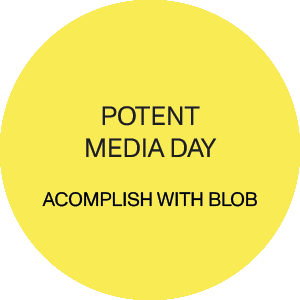Potent media day is a strategically impactful and influential event designed to engage, inform and leave a lasting impression on media representatives.
It involves the skillful orchestration of press conferences, interviews and interactive sessions to effectively convey key messages.
A potent media day goes beyond routine communication, creating a buzz and generating significant coverage by showcasing compelling stories, innovations or announcements.
Potent media day serves as a powerful platform to shape public perception, build relationships with the media and elevate the visibility of a brand or organization.
Personalized Progress Disclaimer. Embarking on a journey to enhance your professional presence can feel like a significant undertaking. We want to assure you that our approach is tailored to your pace, ensuring a smooth and comfortable experience. Our collaborative process begins with an exploration of your goals, and together, we navigate the learning curve at a speed that suits you. Your progress is the compass, and we are here to guide you, ensuring a relaxed and uplifting journey. You can trust that every step is orchestrated to align with your comfort, ensuring a positive and manageable path towards achieving your business aspirations.

By following these steps, we can effectively assist a client in organizing a potent media event that advances relationship-building and nurtures connections with key media stakeholders. The emphasis on strategic planning, engaging discussions and post-event follow-up contributes to the success of the initiative:
PLANNING AND PREPARATION:
- Define Objectives: working closely with the client to define clear objectives for the media event. Whether it’s building relationships, sharing key information or fostering a collaborative environment, having defined goals is essential
- Identify Key Media Stakeholders: compiling a list of key media stakeholders relevant to the client’s industry or focus. Consider journalists, editors, influencers and other media representatives
- Select Event Format: deciding on the format of the event, such as a working breakfast or lunch. Considering the preferences and schedules of the media stakeholders
- Choose Venue and Logistics: selecting a venue that aligns with the event’s tone and accommodates the number of attendees. Plan logistics such as seating arrangements, audio-visual setups and catering
- Create Invitations: crafting professional and engaging invitations that clearly communicate the event’s purpose, date, time and location. Include RSVP details and any specific agenda or topics to be covered
- Personalized Outreach: personally, reaching out to key media stakeholders with personalized invitations. Clearly communicating the value of their attendance and what they can expect from the event
AGENDA DEVELOPMENT:
- Strategic Agenda: developing a strategic agenda that balances networking opportunities, informative sessions and interactive discussions. Structuring the agenda to allow for a mix of formal presentations and casual interactions
- Choose Speakers or Panelists: considering the relatable host to address chosen media or inviting guest speakers or panelists who can add value to the discussions. This could be industry experts, thought leaders or executives within the client’s organization
- Discussion Topics: choosing relevant and engaging discussion topics that align with the client’s key messages and industry trends. Ensuring that topics are of interest to both the client and the media stakeholders
- Networking Opportunities: including dedicated time for networking. Creating an environment that encourages open conversations and facilitates relationship-building among attendees
EVENT EXECUTION:
- Welcome and Introductions: providing a warm welcome and introductions at the beginning of the event. Acknowledging the presence of media stakeholders and express gratitude for their attendance
- Facilitate Discussions: facilitating discussions and presentations in a way that encourages active participation. Use Q&A sessions, roundtable discussions or other interactive formats to engage attendees
- Media Kit Distribution: preparing and distributing media kits containing relevant information about the client, key announcements and any materials that will assist media stakeholders in their coverage including a symbolic gift bag
- Capture Media Insights: encouraging media stakeholders to share their insights and perspectives. This can be done through open discussions, surveys or feedback forms
- Social Media Engagement: leveraging social media platforms to document the event. Encouraging attendees to share their experiences, insights and highlights using event-specific hashtags
FOLLOW-UP AND RELATIONSHIP NURTURING:
- Post-Event Thank You: sending personalized thank-you notes to media stakeholders expressing appreciation for their attendance and contributions. Include key takeaways from the event
- Provide Event Recap: sharing a post-event recap, summarizing key discussions, insights and any notable outcomes. Distributing this to all attendees and stakeholders
- Follow-Up Meetings: facilitating follow-up meetings or engagements based on connections made during the event. This could include one-on-one meetings, interviews or collaborative projects
- Ongoing Communication: maintaining ongoing communication with media stakeholders. Sharing relevant updates, press releases and industry news to nurture the relationship beyond the event
- Measure Impact: evaluating the impact of the media event by assessing media coverage, social media engagement and feedback from attendees. Use these insights to refine future relationship-building efforts

Pricing. Our pricing structure is designed with modularity in mind, ensuring that you only pay for the services you require, allowing for flexibility and customization. For each task you may decide to delegate to us there is a prewritten full-service list. This list consists of basic must do services, extent of available optional added services and suggestion of optional added third party services. During our task related Initial Chat, in a direct conversation with the client, we choose a customized list of services as per clients’ needs and circumstances. To accommodate different difficulty levels, we introduce an index for difficulty. The basic price is multiplied by this index to calculate the price for a task at any difficulty level, ensuring a fair and flexible pricing model that accurately reflects the complexity of the services provided. The level is argumented and agreed upon during the task related Initial Chat. With these inputs we then prepare and deliver to client our exact offer. For client’s information and potential budget range idea we have provided, for each task, a task price list as .pdf file with relevant details disclosed.

